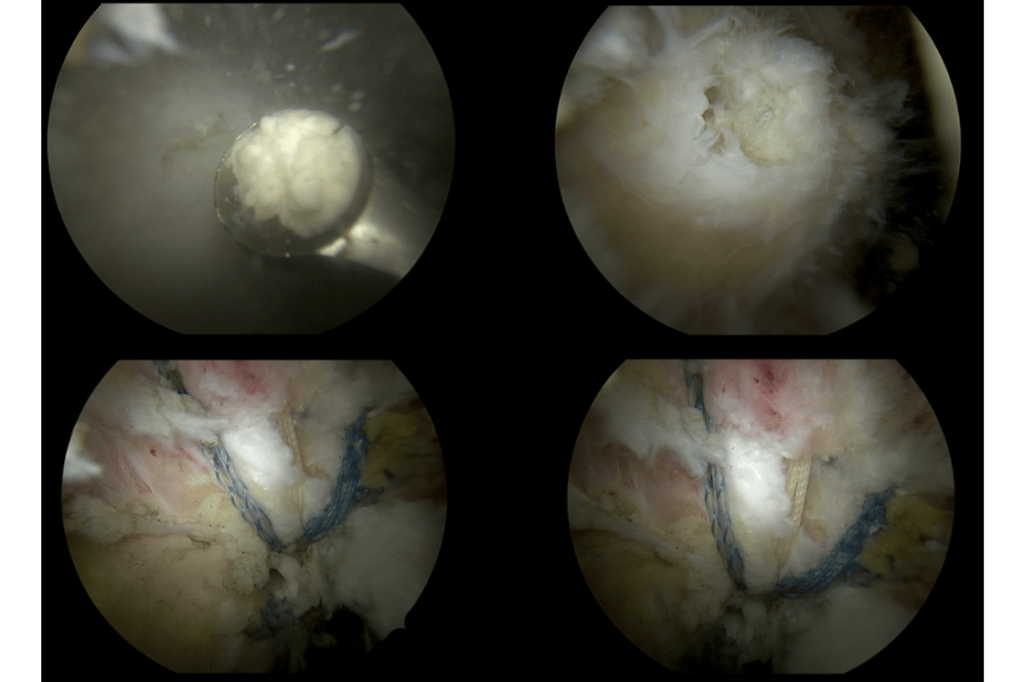Calcific tendinitis is a very painful condition caused by the buildup of calcium deposits in the muscle-tendon structures of the shoulder (especially the supraspinatus tendon). Over time, these calcium deposits create pressure within or around the tendon, leading to restricted movement and night pain. It is more commonly seen in active individuals between 30–60 years old and is more frequent in women.
Although the exact cause of calcific tendinitis is not fully known, factors such as microtraumas (minor injuries), poor blood supply, and biochemical changes are thought to play a role. Symptoms typically include a sudden onset of severe shoulder pain, difficulty lifting the arm overhead, weakness in the shoulder, and pain that wakes the person from sleep at night. The calcium buildup is easily detected using X-ray or MRI imaging.
In mild to moderate cases, the first-line treatment preference is painkillers or steroid injections. However, surgical intervention is required for cases that do not respond to these treatments, when the calcium deposit is large, or when the pain severely impacts the patient’s quality of life.

With minimally invasive surgery (arthroscopic debridement, a “keyhole” procedure), the calcium buildup can be directly visualized and removed. During the operation, the calcium deposits within the tendon are evacuated using special instruments, and any irritation to the surrounding tissues is resolved. If necessary, a tendon repair is also performed during the same session. This method provides maximum benefit with minimal tissue damage.
Thanks to the arthroscopic method, the recovery process is faster compared to open surgery, the scars are smaller, and the patient can return to daily life more comfortably. The success rate is high, and the vast majority of patients regain a painless, functional shoulder.

Duration of Surgery: Approximately 45–60 minutes
Type of Anesthesia: General anesthesia (supported by a nerve block, if necessary)
Surgical Method: Minimally invasive (arthroscopic) technique, performed through 3–4 mm incisions
First day: 4–6 (2–3 if a nerve block is administered)
First week: 3–4
After the 2nd week: 1–2
Generally 1 night in the hospital.
First 2–3 weeks: Use of a sling is recommended
After 3rd week: Passive movements are started
5th–6th week: Active movements and exercise program
2nd month: Return to daily life
3rd month: Sports and strenuous activities
First dressing change: 2nd day
Wound check: 1st week
Suture (stitch) removal: On the 10th day, if appropriate
Recurrence of calcium buildup after treatment is rare. However, it is necessary to take care of the shoulder structure, keep the muscles strong, and avoid repetitive trauma.
Yes. Most of the pain is relieved by cleaning out the calcium deposits. If supported by exercises, shoulder function can be fully restored.
Yes. The exercises our patients perform on their own are usually sufficient to increase the shoulder's range of motion and regain muscle strength post-surgery. Formal physical therapy is very rarely required.
Thanks to the arthroscopic technique, the scars are very small and generally do not cause aesthetic (cosmetic) discomfort.
It is possible to return to desk jobs within 1-2 weeks. For jobs requiring physical exertion, this period can be 4–6 weeks.